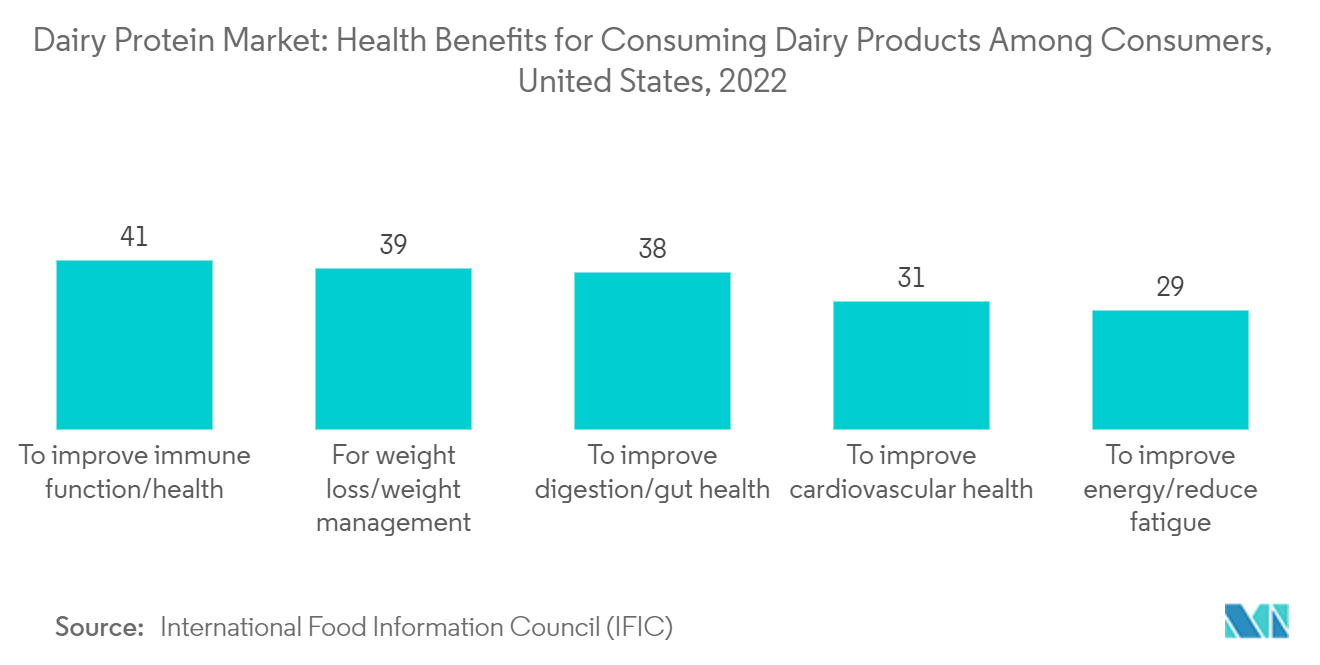Market Trends of Dairy Protein Industry
Protein Is Widely Used In Functional Dairy Products
As consumers become more aware of the health benefits associated with a dairy-rich diet, there is a notable surge in the popularity of protein-enriched foods. At the same time, there is a rising trend towards convenient, ready-to-eat functional foods, driving the demand for dairy proteins. Consumers are increasingly demonstrating heightened nutritional awareness. A snacking guide from Glabia PLC highlights that “snacks high in Protein” emerged as a dominant global trend in 2023, particularly in the United States, Europe, and Asia. This swift expansion in consumer interest towards higher protein diets has led to the incorporation of dairy proteins into bakery products, enhancing their protein content.
Notably, whey protein concentrates and isolates are being utilized for their superior emulsification and foaming/whipping properties. Dairy staples such as yogurt and cheese are immensely popular across Asian, European, and Western markets. Cheese, made from coagulated casein (a milk protein) separated from whey, stands out as another globally cherished dairy product. The steady demand for these items not only supports the growth of dairy proteins but also underscores their significance in both traditional and alternative dairy products worldwide. The appetite for high-protein, ready-to-drink dairy beverages is on the rise. Celebrated for their rich vitamin and mineral content, these high-protein ready-to-drink (RTD) beverages boast a diverse array of indulgent flavors.

Europe Dominates The Dairy Protein Industry
Europe dominates the global dairy protein market, holding the largest market share. In Germany, milk protein has transitioned from a mere appealing ingredient to a central component in health and wellness-focused food products. This shift significantly propels the growth of dairy ingredients, which find applications in diverse industries such as dairy, confectionery, sports, and clinical nutrition. Additionally, in the United Kingdom, heightened investments in the sports nutrition sector, driven by a surge in consumer interest in fitness and recreational sports, bolster the demand for dairy protein ingredients. In recent years, manufacturers of ready-to-drink protein shakes and high-protein meal replacements have increasingly favored whey protein concentrates (WPC), whey protein isolates (WPI), and dairy-derived whey as their primary ingredients.
Moreover, the rising emphasis on holistic wellness further underscores the pivotal role of dietary supplements in daily routines. Over time, ingredients like whey protein concentrates (WPC), whey protein isolates (WPI), and dairy-derived whey have emerged as favorites for crafting ready-to-drink protein shakes and high-protein meal replacements. In Spain, the robust milk production, with 2022 figures hitting approximately 7,323.6 thousand metric tons according to the Ministry of Agriculture, Food and Environment, supports the widespread application of dairy proteins. These proteins are extensively utilized in sectors like bakery and confectionery, infant milk formulas, and both sports and clinical nutrition, highlighting their significance in the Spanish market.


